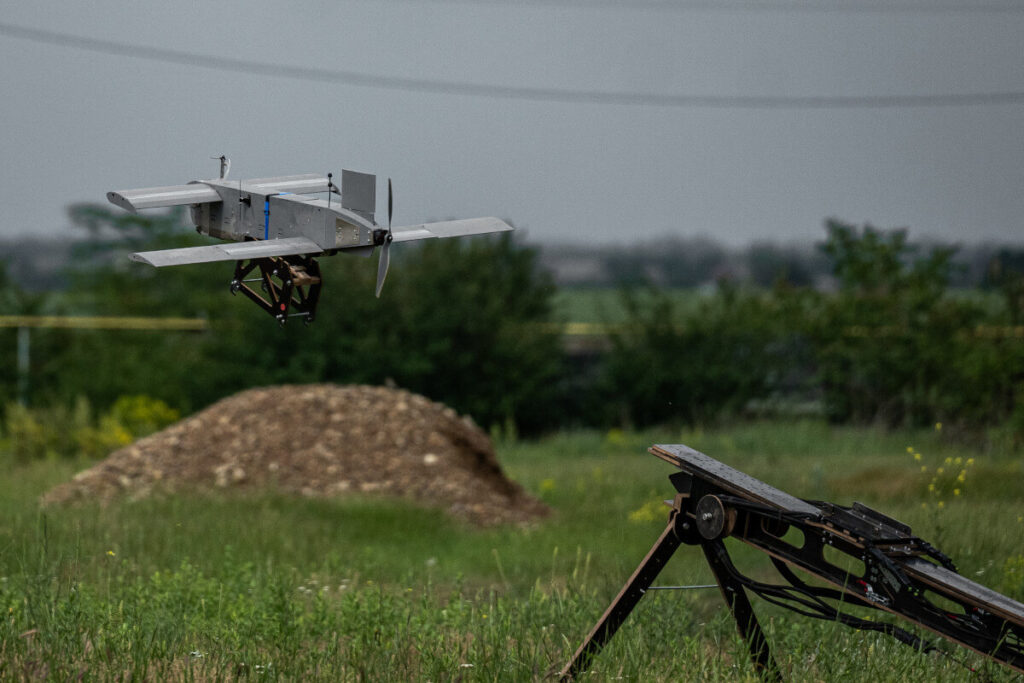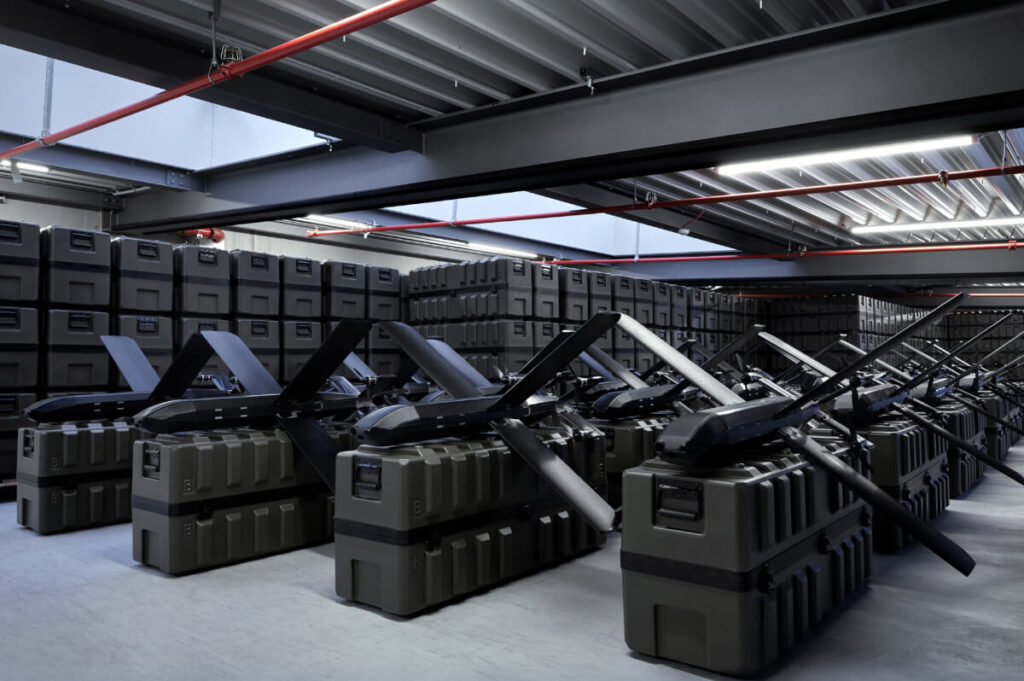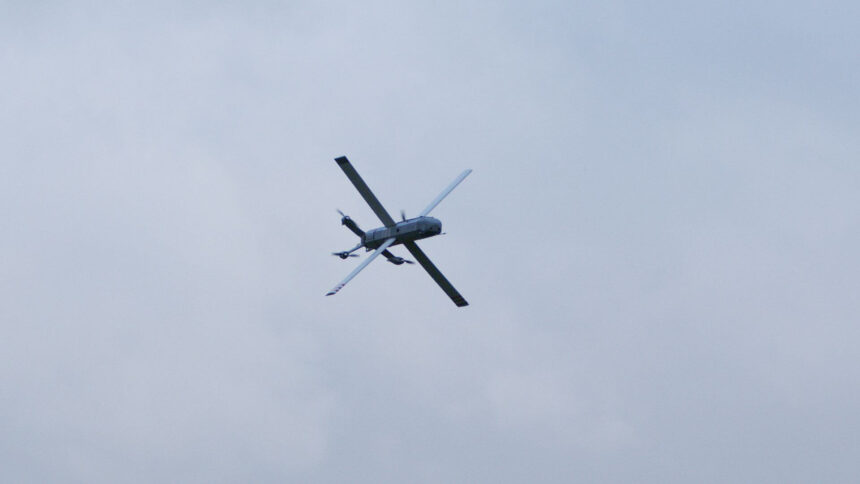In order to assist Ukraine in its defensive fight against the Russian invaders, Germany is very active in most aspects of the military assistance, for example providing Ukraine with substantial amounts of air defence, artillery and armoured vehicles.
One of the few exceptions is the provision of so-called “loitering munitions” — i.e. drones that are for example equipped with an RPG-7 warhead, various explosives or other payloads, which search for suitable targets within an area and then engage them.
The identification and engagement of a target is carried out either completely manually by the drone pilot, semi-autonomously or fully autonomously (identification), depending on the system.
In the first three years of the war, Germany didn’t carry out any deliveries of such systems, while various countries such as Estonia or Great Britain had already invested millions in the procurement of such systems which are indeed indispensable for Ukraine.
Things are starting to move
Nevertheless: In June 2024, during the visit of the Ukrainian President to Germany, such a delivery was publicly pledged. Another five months passed before BILD published details of the pledge and Minister of Defence Boris Pistorius commented on it in the same article.
Announced was the delivery of 4,000 HF-1 loitering munitions, whose actual delivery (600 units) was first confirmed by the German government two months later in January 2025.

The HF-1s are provided by the Munich-based defence company Helsing, which purchases the AQ 100 Bayonet from Terminal Autonomy and then fundamentally modifies it internally, for example by fitting the drone with in-house electronics and software to make it more resilient to electronic countermeasures by the Russian military.
A company spokesperson told me that Helsing has now supplied well over 1,000 units to the Ukrainian army.
The feedback so far has been rather mixed. For example, a Bloomberg article recently caused a stir in which several people who have studied the HF-1 in detail criticise the AI software Altra, the in their opinion cheap construction and the comparatively high procurement costs, among other things.
On the other hand, there is also positive feedback. Maxim Sheremet, the founder of a Kyiv-based research centre that works to improve the unmanned systems used on the front line, told Bloomberg that although there are indeed problems with the AI software Altra, it is still really effective.
Furthermore, several users confirm that the HF-1 has a much greater range than conventional FPV drones, meaning that it is possible to engage targets that many cheaper drones would not be able to reach. Drone teams can also operate more safely as they do not have to operate so close to the front line.
Unfortunately, I cannot say much about the repeatedly criticised high procurement costs, as a company spokesperson did not want to give me any specific information in this regard.

Let me just say this: The example of the procurement of FFG APCs and FFG MRAPs shows that it would not be unusual for the German Ministry of Defence to pay higher prices for products if they are produced and provided by a German company, even though there are cheaper alternatives of comparable, equal or better quality.
Further deliveries are being prepared
In addition to the HF-1, Ukraine will also be able to utilise another model from Helsing in the future — the HX-2, which is a more powerful in-house development.
According to Helsing, the HX-2 has a range of up to 100 kilometres and, like the HF-1, is equipped with an Altra AI chip that increases the drone’s resilience to electronic countermeasures.
On the 13th of February 2025, the Munich-based defence company announced that it had received a new order to produce and deliver 6,000 of these loitering munitions to Ukraine.
This press release was published at a time when the German government had already fully bound the funds for the procurement of armaments in 2025 for months. In other words, there was no money left for such an order.
BILD therefore reported on the same day that the procurement of the HX-2 was part of the aid package worth around €3 billion, which was still being intensively debated and negotiated at the time of the announcement.

A delivery to Ukraine should therefore only take place once financing has been secured from the German government.
One day after the article was published and my subsequent reporting on the financing of the drones, I fortunately had the opportunity to talk to a spokesperson from Helsing about the project for more than half an hour.
During the conversation, I learned that the original contract with the Ukrainian Ministry of Defence already included an option to provide a further 6,000 drones in addition to the 4,000 that had been firmly ordered. This option becomes binding as soon as “a binding funding commitment from the federal government has been received”.
I was also informed that Helsing will work on the production of the HX-2 upfront, i.e. they have already started to produce the pledged drones at their own expense in the recently opened Resilience Factory (RF-1) in order to be able to start deliveries as soon as possible once funding has been secured.
However, for obvious reasons, I was not told exact details such as the number of HX-2s already produced.

The question of funding
The attentive reader may have been somewhat perplexed by the statement that a delivery will be carried out as soon as “a binding funding commitment from the federal government has been received”.
After all, following months of discussion by all political parties, the Bundestag’s Budget Committee approved the additional billions for the assistance for Ukraine three weeks ago, meaning that projects such as the HX-2, which are part of the €3 billion package, should actually receive a binding funding commitment.
Helsing did not want to comment on this for obvious reasons, but I heard from defence industry circles that this was more due to administrative difficulties on the part of the Ministry of Defence and had nothing to do with Helsing as a contractual partner.
This is also backed up, for example, by the fact that since the approval of the funds by the Bundestag’s Budget Committee, not a single defence company has publicly announced additional orders which involve deliveries to Ukraine.
Apparently, Rheinmetall, Diehl Defence, Hensoldt and other companies are also still waiting for the urgently needed and long-awaited money.
However, there are said to be no fundamental difficulties, so I assume that the money will change hands soon, which means that the delivery of the 6,000 HX-2s to Ukraine should soon become a reality.
10,000 drones in total — it’s a start! Given that a new government, which has much greater financial leeway in terms of defence spending and aid for Ukraine, will soon take office, I think it is unrealistic to expect the number of ordered loitering munitions to remain at just 10,000 for the foreseeable future if the Russian war of aggression does not come to an end this year.
Until new contracts are awarded, however, we have no choice but to hope that the Ukrainian army can effectively deploy the HF-1s and HX-2s already under contract and engage and destroy as many Russian high-value targets as possible.
If you liked this post, consider following me on X, Bluesky, or Telegram. If you like, you can also leave me a tip on Ko-fi.


